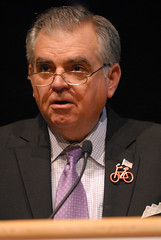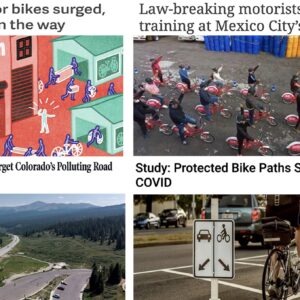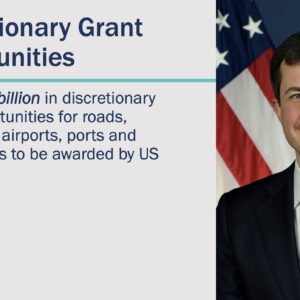U.S. Department of Transportation Secretary Ray LaHood will be in Portland today. The Daily Journal of Commerce and reliable sources say that LaHood will join regional transportation officials near the Aerial Tram tomorrow morning.
LaHood is expected to show his support for Portland’s burgeoning streetcar network (not that it needs it, streetcar is getting money from everywhere right now) and to get a first-hand look at a prototype of a locally manufactured streetcar (by Clackamas-based Oregon Ironworks).
Back in April, LaHood said on C-SPAN that Portland is a “model” for streetcar development.
LaHood is fresh off a photo-op in Denver where he helped break ground on a stimulus-funded road resurfacing and bike path improvement project. The $32 million project includes $5 million to reconstruct a bike path that runs alongside a highway. LaHood told a Denver TV station that, “making it easier for people to bike helps the environment.”
LaHood’s visit bodes very well for local streetcar backers and it also shows that he’s not shy about his support for transit and non-highway modes. Back in May, LaHood was ridiculed by Newsweek columnist George Will for his support of Portland’s streetcar and bike infrastructure efforts.
We’ll be there to check out the scene tomorrow. LaHood’s visit is specifically about streetcars, but if he has anything to say about bikes, we’ll definitely let you know.






This is great news! Can’t wait for all of the streetcar lines crisscrossing across Portland!
The names are going to be the coolest part! They’ll name each line after a precious stone. Rock on Portland!
Aero Tram Critical Mass, DAMMIT!
More transit oriented property development to go with it? I’m all for more Max and street car lines, but the way Metro and Tri-Met go about it is totally wrong. It’s not about ridership, it’s about lining the pockets of the property developers and generating more property taxes.
streetcar tracks are a huge hazard for cyclists, the city is working at cross purposes here.
Paul Tay..#2.lets wait until you’re under the care of doctors and nurses at OHSU first and they’re stuck on the opposite end of the tram from your bedside.
or by all means, lets wait and critical mass it until your grandmother needs to catch a last minute imaging, PAT, or followup appointment at south waterfront…
the tram is for employees, doctors and patients from around the state and the NW ….its there to help them, its built, get over it.
I’d like to see a Streetcar that seats enough people to be really usefuyl, instead of coming off as a tourist-toy. While we’re at it, let’s expand transit amenities to serve more poor and underserved populations in mid-county and outer southeast, where people desperately need jobs.
beth h:
I really like your comment about expanding transit amenities to under-served communities, but I fear that a lot of these communities live quite far from the city center where density is not as high.
For a streetcar to thrive, there needs to be density. There needs to be people on the street, not two or three families living each block.
The streetcar creates development along its lines and accordingly, jobs. While I see your concern about bringing these jobs to under-served communities, I feel that it might be a better and more immediate solution to integrate these communities into the new development that takes place.
The percentage of affordable housing in the Pearl District, for example, is one such instance in which we have been able to bring normally marginalized individuals into the urban cityscape. The Pearl boasts one of the highest, if not the highest percentages of affordable housing across the city.